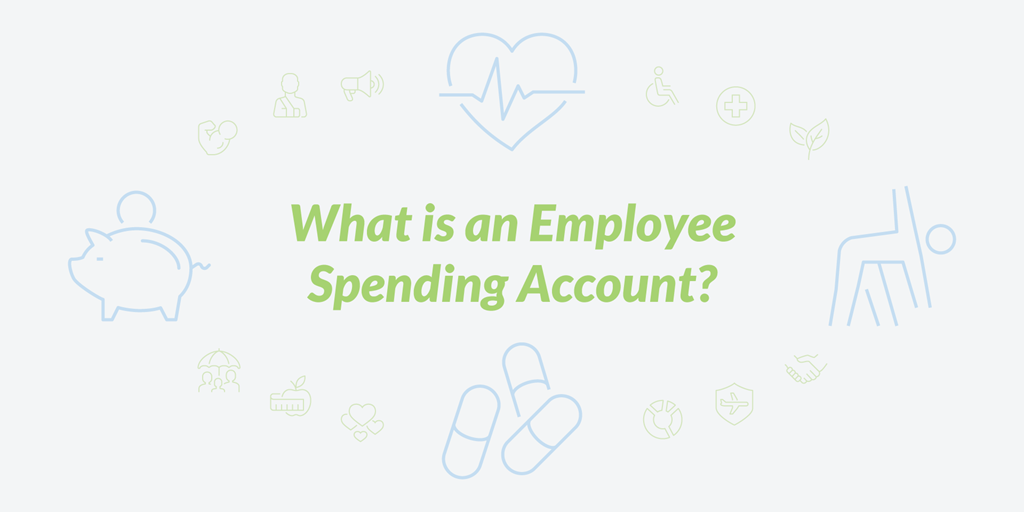What is a Spending Account?

Have you heard any of the acronyms: HSA, PHSP, TSA, LSA, WSA, FSA (yikes)? Or the term "Health Spending Account"? In this article we'll explore what health related spending accounts are and the various types of spending accounts that exist.
Employee spending accounts are becoming quite common as a means of supplementing existing employee benefits plans. In simple terms, an employee spending account is a fixed amount of money made available to employees each year to spend on certain types of expenses. For the purposes of this article we’ll only be considering types of spending accounts that apply to health related expenses. But it is important to note that there are spending accounts that cover non-health related expenses such as computer equipment or safety gear.
Employee spending accounts are simple to set up, simple to maintain and provide a lot of value to employees. Employers define which expenses are eligible for reimbursement and the amount of money to place in the spending accounts for their employees each year. A spending account provider such as a spending account provider, third party administrator (TPA), or insurance carrier will then adjudicate claims submitted by employees for reimbursement.
In general this is how most spending accounts work, however there are various types of spending accounts that all work a bit differently from one another.
Types of Health Related Employee Spending Accounts
In general there are three main types of health related employee spending accounts:
- Healthcare Spending Account
- Taxable Spending Account
- Flexible Spending Account

Health Spending Account (HSA)
A Health Spending Account is sometimes also referred to as a Health Care Spending Account (HCSA) or Private Health Spending Plan (PHSP). An HSA is the most common type of spending account and there are several good reasons for this.
An HSA can cover eligible expenses not covered through provincial healthcare or an employee’s existing group benefits plan, and covers a variety of health and dental benefits. Eligible expenses are governed by the Canada Income Tax Act and a list of eligible expenses can be found on this handy HSA expenses table. An HSA can also cover expenses and employee incurs beyond plan maximums or expenses relating to co-insurance or deductibles. The Canada Revenue Agency defines what expenses are eligible, and eligible expenses paid through an HSA are made tax free to employees. What’s more, employers can deduct their employees’ eligible HSA expenditures as a business expense.

Taxable Spending Account (TSA)
A Taxable Spending Account is sometimes also referred to as a Wellness Spending Account (WSA) or a Lifestyle Spending Account (LSA). As the name implies, unlike the tax-free HSA, a TSA is a taxable benefit that covers certain health related products and services that are outside the scope of an HSA.
Employers control what expenses can be claimed under a TSA by defining eligible expenses when the benefit is defined. TSAs act to supplement traditional group benefits coverage by adding coverage for expenses that an employee would normally need to personally pay for out of pocket.
Some example TSA eligible expenses might include:
- Gym memberships
- Personal training
- Non-prescription medication
- Sunglasses
- etc.

Flexible Spending Account (FSA)
A Flexible Spending Account takes the concepts of an HSA and a TSA and blends them together. It is a benefit that allows an employee to choose how much of their total spending account allocation they would like to go into each type of spending account. For example, an employee could choose to place 60% of their eligible funds into an HSA and the other 40% into a TSA. Typically an employee is able to change their allocation annually.
In addition to splitting allocations up between an HSA and TSA, some flexible spending account providers facilitate the ability for an employer to permit employees to designate a portion of their flexible spending account funds to spend on RRSP contributions.
Carry Forwards
There are three common ways in which the funds available to an employee through their spending account can be managed:
- Unused funds carry forward
- Unclaimed expenses carry forward
- No carry forward (use it or lose it)
Unused Funds Carry Forward
Any unused benefit amount that was newly allocated at the beginning of a benefit year can be carried forward into the next benefit year. If at the end of the benefit year the employee has not used all of the funds carried over from the previous benefit year, those funds are forfeit. The employee loses access to those unused funds and they are returned to the employer.
Unclaimed Expenses Carry Forward
Any unclaimed expenses that occurred during a benefit year can be carrier over into the next benefit year and reimbursed in that year. If the employee does not fully utilize their spending account in any given benefit year they forfeit the unused amount which is returned to the employer. Any unused benefit amount is not carried forward.
No Carry Forward (use it or lose it)
Neither unused funds nor unclaimed expenses can be carried forward. Any unused funds at the end of a benefit year are returned to the employer.
Funding Methods
Depending on the spending account provider, there are various ways in which spending account can be funded.
- On demand
- Monthly
- Quarterly
- Semi-annually
- Annually
Typically the spending account provider will charge a small administration fee per transaction it processes. At the end of the benefit year, any unclaimed funds are returned to the employer.
Not all Spending Accounts are Created Equal
When deciding which spending account provider to use, here are a few questions that can help guide the process:
- Does the provider offer the ability to define a flexible spending account?
- Does the provider offer simple online employee enrollment?
- For their flexible spending accounts, does the provider make annual employee allocations easy?
- Does the provider offer simple mobile claims submission?
- Does the provider offer robust reporting on spending account utilization?
How to Set Up a Spending Account
Talk to your advisor about what type of spending account will pair best with your employee group benefits objectives and best serve your plan members.